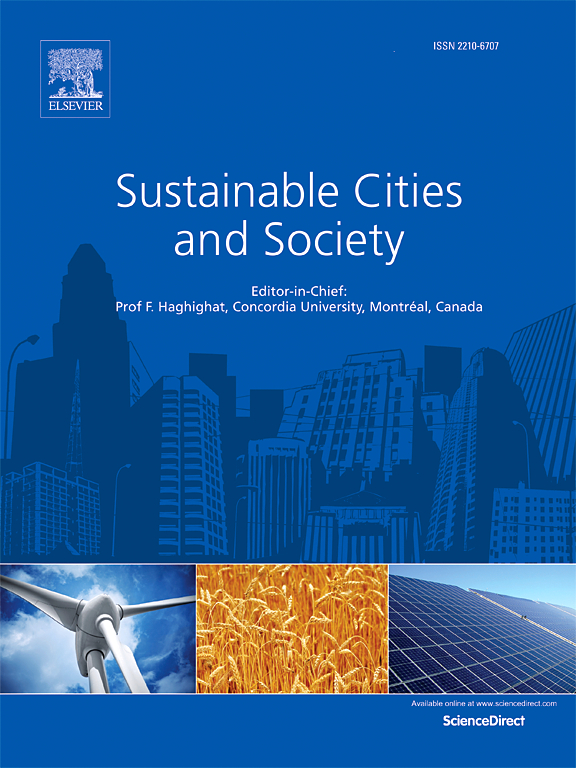From complex networks to urban heat island governance: Structural analysis and intervention in xiamen island's heat island network
IF 10.5
1区 工程技术
Q1 CONSTRUCTION & BUILDING TECHNOLOGY
引用次数: 0
Abstract
Rapid urbanization, under global warming, has intensified the urban heat island effect, causing significant environmental and social challenges. Many studies propose governance measures for individual landscape patches, but their effectiveness remains limited. A global perspective is essential for systematically analyzing urban heat environments. This study uses Xiamen Island as a case study and, based on the "source-sink" landscape theory, applies a reverse-thinking approach to construct urban heat island network that needs to be disrupted. By introducing complex network theory and aligning it with urban needs, a novel framework for optimizing and governing the global heat environment is proposed. The results show that: (1) Xiamen Island has 86 urban heat island sources and 202 heat transfer corridors; (2) 7 potential heat island sources were identified through pinch point analysis; (3) Based on barrier point analysis, 23 heat transfer barriers and 19 priority corridors for governance were found; (4) 6 potential heat transfer corridors were identified using complex network theory and LST data; (5) Robustness analysis of the urban heat island network revealed a governance strategy prioritizing closeness centrality, identifying 15 sources for prioritized governance. This study provides practical new approaches and strategies for comprehensive governance of urban heat environments.
求助全文
约1分钟内获得全文
求助全文
来源期刊

Sustainable Cities and Society
Social Sciences-Geography, Planning and Development
CiteScore
22.00
自引率
13.70%
发文量
810
审稿时长
27 days
期刊介绍:
Sustainable Cities and Society (SCS) is an international journal that focuses on fundamental and applied research to promote environmentally sustainable and socially resilient cities. The journal welcomes cross-cutting, multi-disciplinary research in various areas, including:
1. Smart cities and resilient environments;
2. Alternative/clean energy sources, energy distribution, distributed energy generation, and energy demand reduction/management;
3. Monitoring and improving air quality in built environment and cities (e.g., healthy built environment and air quality management);
4. Energy efficient, low/zero carbon, and green buildings/communities;
5. Climate change mitigation and adaptation in urban environments;
6. Green infrastructure and BMPs;
7. Environmental Footprint accounting and management;
8. Urban agriculture and forestry;
9. ICT, smart grid and intelligent infrastructure;
10. Urban design/planning, regulations, legislation, certification, economics, and policy;
11. Social aspects, impacts and resiliency of cities;
12. Behavior monitoring, analysis and change within urban communities;
13. Health monitoring and improvement;
14. Nexus issues related to sustainable cities and societies;
15. Smart city governance;
16. Decision Support Systems for trade-off and uncertainty analysis for improved management of cities and society;
17. Big data, machine learning, and artificial intelligence applications and case studies;
18. Critical infrastructure protection, including security, privacy, forensics, and reliability issues of cyber-physical systems.
19. Water footprint reduction and urban water distribution, harvesting, treatment, reuse and management;
20. Waste reduction and recycling;
21. Wastewater collection, treatment and recycling;
22. Smart, clean and healthy transportation systems and infrastructure;
 求助内容:
求助内容: 应助结果提醒方式:
应助结果提醒方式:


